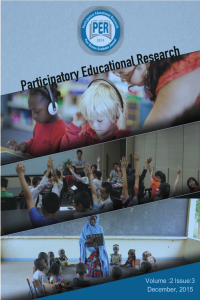Abstract
References
- Bardovi-Harlig, K. (1996). Pragmatics and language teaching: bringing pragmatics and pedagogy together. In Bouton, L. F. (Ed).Pragmatics and Language Learning. Monograph Series, 7, 21-39.
- Campbell, R., & Wales, R. (1970). The study of language acquisition. New Horizons in Linguistics, 242-260.
- Canale, M., and Swain, M. (1980). Theoretical bases of communicative approaches to second language teaching and testing. Applied Linguistics, 1(1), 1-47.
- Ellis, R. (1991). Communicative competence and the Japanese learner. JALT Journal, 13(2), 103-129.
- Holmes, J., and Brown, D. F. (1987). Teachers and students learning about compliments. TESOL Quarterly, 21(3), 523-546.
- Hymes, D. (1972). On communicative competence. Sociolinguistics, 269293, 269-293.
- Izumi, K. (1996). Teaching sociolinguistic knowledge in Japanese high schools. JALT Journal, 18(2), 327-340.
- Kasper, G. & Blum-Kulka, S. (1993). Interlanguage pragmatics. New York: Oxford University Press.
- Kramsch, C. (2014), Teaching foreign languages in an era of globalization: Introduction. The Modern Language Journal, 98: 296–311.
- Leech, G.N. (1983). Principles of pragmatics. New York: Longman.
- Mizne, C. A. (1997). Teaching sociolinguistic competence in the ESL classroom. Senior Thesis Projects, 1993-2002. http://trace.tennessee.edu/utk_interstp2/20
- Omaggio, A.C. (2001). Teaching languages in context: Proficiency-oriented instruction, 3rd ed. Boston, MA: Heinle & Heinle Publishers.
- Strauss, A., & Corbin, J. M. (1990). Basics of qualitative research: grounded theory procedures and techniques. Sage Publications, Inc.
- Ya, L. I. U. (2010). A study of language teaching from a sociolinguistic perspective of communicative competence. Canadian Social Science, 4(3), 80-86.
- Yu, M. C. (2006). On the teaching and learning of l2 sociolinguistic competence in classroom settings. Asian EFL Journal, 1-24.
Abstract
Sociolinguistic competence has been an integral part of communicative competence in that it includes learning pragmatic and sociolinguistic knowledge about how to use language linguistically and socially appropriately. However, a number of studies highlight the lack of such communicative skills among EFL learners regardless of their proficiency level of linguistic knowledge. More specially, learners may not be able to develop socio-pragmatic knowledge of language as much as grammatical knowledge of the language being learnt. Informed by this critical inconsistency and learning challenge, this study reports the perceptions of English teachers about the development of sociolinguistic competence in language classrooms. The purpose is to explore their perceptions about learners’ as well as the non-native EFL teachers’ knowledge of sociolinguistic competence along with any difficulty they may face with the integration of this particular competence in their classroom practice. Both native (n=35) and non-native (n=35) English teachers were administered a questionnaire and were asked to submit written reports revealing their perceptions underpinning the knowledge and practice of sociolinguistic competence as part of communicative competence. The results revealed that the development of sociolinguistic rules can guide learners in the choice of appropriate forms which should be closely integrated in language teaching and learning curricula
Keywords
Communicative competence sociolinguistic competence teacher perceptions English as a foreign language (EFL) teaching and learning curricula
References
- Bardovi-Harlig, K. (1996). Pragmatics and language teaching: bringing pragmatics and pedagogy together. In Bouton, L. F. (Ed).Pragmatics and Language Learning. Monograph Series, 7, 21-39.
- Campbell, R., & Wales, R. (1970). The study of language acquisition. New Horizons in Linguistics, 242-260.
- Canale, M., and Swain, M. (1980). Theoretical bases of communicative approaches to second language teaching and testing. Applied Linguistics, 1(1), 1-47.
- Ellis, R. (1991). Communicative competence and the Japanese learner. JALT Journal, 13(2), 103-129.
- Holmes, J., and Brown, D. F. (1987). Teachers and students learning about compliments. TESOL Quarterly, 21(3), 523-546.
- Hymes, D. (1972). On communicative competence. Sociolinguistics, 269293, 269-293.
- Izumi, K. (1996). Teaching sociolinguistic knowledge in Japanese high schools. JALT Journal, 18(2), 327-340.
- Kasper, G. & Blum-Kulka, S. (1993). Interlanguage pragmatics. New York: Oxford University Press.
- Kramsch, C. (2014), Teaching foreign languages in an era of globalization: Introduction. The Modern Language Journal, 98: 296–311.
- Leech, G.N. (1983). Principles of pragmatics. New York: Longman.
- Mizne, C. A. (1997). Teaching sociolinguistic competence in the ESL classroom. Senior Thesis Projects, 1993-2002. http://trace.tennessee.edu/utk_interstp2/20
- Omaggio, A.C. (2001). Teaching languages in context: Proficiency-oriented instruction, 3rd ed. Boston, MA: Heinle & Heinle Publishers.
- Strauss, A., & Corbin, J. M. (1990). Basics of qualitative research: grounded theory procedures and techniques. Sage Publications, Inc.
- Ya, L. I. U. (2010). A study of language teaching from a sociolinguistic perspective of communicative competence. Canadian Social Science, 4(3), 80-86.
- Yu, M. C. (2006). On the teaching and learning of l2 sociolinguistic competence in classroom settings. Asian EFL Journal, 1-24.
Details
| Primary Language | English |
|---|---|
| Subjects | Studies on Education |
| Journal Section | Research Articles |
| Authors | |
| Publication Date | October 1, 2015 |
| Acceptance Date | October 14, 2015 |
| Published in Issue | Year 2015 Volume: 2 Issue: 3 |


